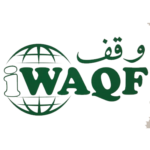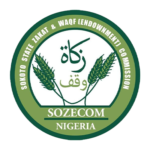The role of social media in public management
Author: Ibrahim Abdul Mugis
Introduction
Social media has become an integral part of modern communication, significantly impacting how organizations operate. Public organizations, in particular, have leveraged social media to enhance their interactions with the public, improve transparency, manage crises, and build a positive public image. This paper focuses on several key roles that social media plays in public organizations, specifically communication and engagement, transparency and accountability, crisis management, public relations and image building, outreach and inclusivity, policy promotion and education, and data collection and analysis.
Communication and Engagement
Social media allows public organizations to communicate directly with citizens, providing a platform for immediate and transparent exchanges. Through platforms such as Twitter, Facebook, and Instagram, public organizations can engage with the community, offer real-time updates, and gather feedback. This direct line of communication helps in building a more responsive and engaged public sector. According to Mergel (2013), social media fosters a two-way communication channel where public entities can listen to and address the concerns of their constituents promptly. This interaction is crucial for building trust and encouraging active civic participation.
Transparency and Accountability
The use of social media by public organizations enhances transparency and accountability. By sharing reports, updates, and data online, these organizations can keep the public informed about their activities and decisions. Moreover, social media enables citizens to hold organizations accountable by questioning and scrutinizing their actions in a public forum. Bertot, Jaeger, and Grimes (2010) highlight that social media platforms can be utilized as tools to promote open governance, allowing for greater scrutiny and public oversight of governmental actions and policies. This transparency is essential for maintaining public trust and ensuring that public organizations operate in an ethical and responsible manner.
Crisis Management
During crises, social media is an essential tool for public organizations. It allows for the rapid dissemination of information, helping to manage public perception and control misinformation. Timely updates on social media can guide the public through emergencies, providing critical information and instructions. Houston et al. (2015) emphasize that social media can enhance the effectiveness of crisis communication by enabling real-time updates and facilitating direct communication between authorities and the public. This immediate access to information can help mitigate the impact of crises and ensure public safety.
Public Relations and Image Building
Public organizations can leverage social media to build a positive public image. By sharing success stories, community projects, and other positive developments, organizations can foster goodwill and trust. Consistent and positive messaging helps in maintaining a favorable public perception and strengthening community relations. Lovejoy and Saxton (2012) note that social media provides a platform for public organizations to highlight their achievements and engage in positive storytelling, which can significantly enhance their public image and reputation.
Outreach and Inclusivity
Social media enables public organizations to reach diverse audiences, including those who may not be engaged through traditional communication channels. By utilizing various social media platforms, organizations can ensure that their messages are inclusive and accessible to all demographic groups, promoting broader community engagement. Kent and Taylor (2016) argue that social media can facilitate more inclusive communication practices, allowing public organizations to reach marginalized and underrepresented communities effectively. This inclusivity is crucial for fostering a sense of community and ensuring that all citizens have a voice in public affairs.
Policy Promotion and Education
Social media serves as a powerful tool for policy promotion and public education. Public organizations can use these platforms to inform citizens about new policies, changes in regulations, and other important updates. Additionally, social media campaigns can educate the public on various issues such as health, safety, and civic responsibilities. Mossberger, Wu, and Crawford (2013) highlight that social media can enhance the dissemination of policy-related information, making it easier for citizens to stay informed and engaged with governmental initiatives.
Data Collection and Analysis
Through social media, public organizations can collect valuable data and insights. Sentiment analysis of social media interactions helps in understanding public opinion and gauging sentiment towards policies and initiatives. Moreover, surveys and polls conducted on social media can provide direct feedback from the community. Williams (2014) points out that the data collected from social media can offer critical insights into public preferences and concerns, enabling public organizations to make more informed decisions and tailor their services to better meet the needs of the community.
Case Study: Centers for Disease Control and Prevention (CDC)
To illustrate the effective use of social media by public organizations, consider the case of the Centers for Disease Control and Prevention (CDC) during the COVID-19 pandemic. The CDC utilized various social media platforms to provide timely updates, disseminate critical health information, and combat misinformation. By actively engaging with the public on platforms like Twitter and Facebook, the CDC was able to reach a broad audience, ensuring that accurate information was accessible to all. Their social media strategy included regular updates, interactive Q&A sessions, and collaborations with influencers to amplify their message. This approach not only helped in managing the public health crisis but also reinforced the CDC’s role as a trusted source of information.
Case Study: Awqaf Africa
Awqaf Africa provides another example of effective social media use in public organizations. Awqaf Africa is dedicated to educating African youths about the importance of waqf (Islamic endowment) to economic and community development. Their social media strategy includes daily posts with creative content and monthly tasks led by experts from the field. By consistently providing educational materials and engaging with their audience, Awqaf Africa has managed to raise awareness and foster a deeper understanding of waqf among the youth. Their efforts highlight the role of social media in not only spreading information but also in promoting economic development and community growth through targeted educational initiatives (Awqaf Africa, 2024).
Conclusion
In conclusion, social media plays a crucial role in enhancing the operations of public organizations. From improving communication and engagement to promoting transparency and managing crises, the strategic use of social media can significantly benefit public organizations. However, it is essential to manage these platforms carefully to handle misinformation, ensure data security, and maintain professional and consistent messaging. The cases of the CDC during the COVID-19 pandemic and Awqaf Africa’s educational campaigns exemplify the potential of social media to effectively communicate with the public, manage crises, and promote community development. By leveraging social media strategically, public organizations can enhance their responsiveness, transparency, and overall effectiveness in serving the community.
References
Awqaf Africa. (2024). Home. Retrieved from https://www.awqafafrica.org
Bertot, J. C., Jaeger, P. T., & Grimes, J. M. (2010). Using ICTs to create a culture of transparency: E-government and social media as openness and anti-corruption tools for societies. Government Information Quarterly, 27(3), 264-271. https://doi.org/10.1016/j.giq.2010.03.001
Houston, J. B., Hawthorne, J., Perreault, M. F., Park, E. H., Hode, M. G., Halliwell, M. R., … & Griffith, S. A. (2015). Social media and disasters: A functional framework for social media use in disaster planning, response, and research. Disasters, 39(1), 1-22. https://doi.org/10.1111/disa.12092
Kent, M. L., & Taylor, M. (2016). From homo economicus to homo dialogicus: Rethinking social media use in CSR communication. Public Relations Review, 42(1), 60-67. https://doi.org/10.1016/j.pubrev.2015.11.003
Lovejoy, K., & Saxton, G. D. (2012). Information, community, and action: How nonprofit organizations use social media. Journal of Computer-Mediated Communication, 17(3), 337-353. https://doi.org/10.1111/j.1083-6101.2012.01576.x
Mergel, I. (2013). A framework for interpreting social media interactions in the public sector. Government Information Quarterly, 30(4), 327-334. https://doi.org/10.1016/j.giq.2013.05.015
Mossberger, K., Wu, Y., & Crawford, J. (2013). Connecting citizens and local governments? Social media and interactivity in major US cities. Government Information Quarterly, 30(4), 351-358. https://doi.org/10.1016/j.giq.2013.05.016
Williams, S. A. (2014). Collecting and analyzing social media data: A process and analysis toolkit. American Behavioral Scientist, 58(10), 1341-1354. https://doi.org/10.1177/0002764214524625
—
Feel free to adjust the content and references to fit your specific focus and the details of the case studies.

Awqaf Africa is a prominent organization dedicated to empowering communities across the African continent. Established to foster sustainable development and social welfare, Awqaf Africa focuses on harnessing the potential of endowments (awqaf) to drive positive change. Through strategic initiatives, partnerships, and impactful projects, Awqaf Africa endeavors to address socio-economic challenges and promote prosperity within African societies.
- Choose your favourite cause
- Register to our website !
- Donate the amount you like
- Stay tuned about cause






Mashallah, it is beneficial and true for our daily lives.
Let make social a positive response